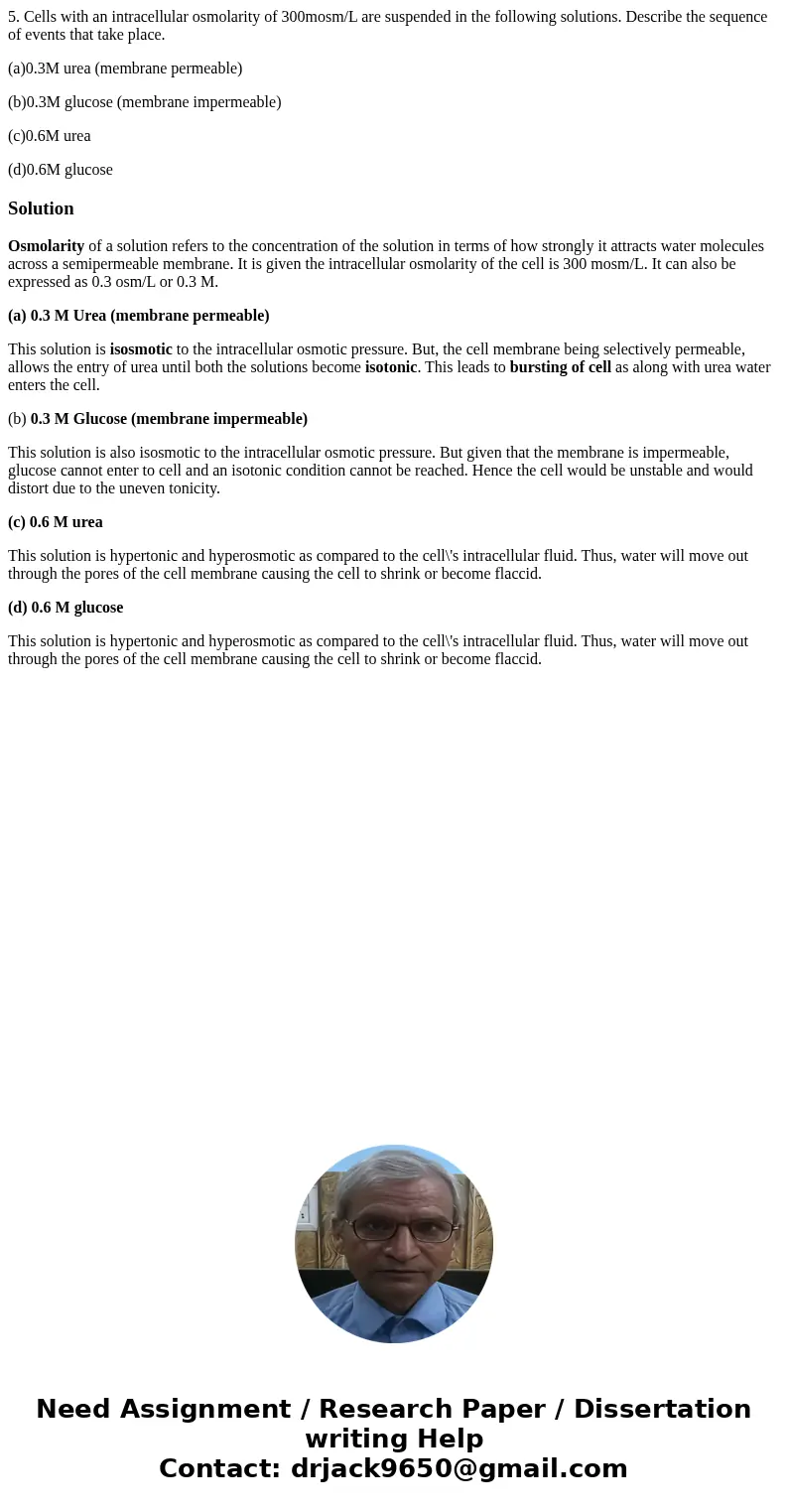5 Cells with an intracellular osmolarity of 300mosmL are sus
5. Cells with an intracellular osmolarity of 300mosm/L are suspended in the following solutions. Describe the sequence of events that take place.
(a)0.3M urea (membrane permeable)
(b)0.3M glucose (membrane impermeable)
(c)0.6M urea
(d)0.6M glucose
Solution
Osmolarity of a solution refers to the concentration of the solution in terms of how strongly it attracts water molecules across a semipermeable membrane. It is given the intracellular osmolarity of the cell is 300 mosm/L. It can also be expressed as 0.3 osm/L or 0.3 M.
(a) 0.3 M Urea (membrane permeable)
This solution is isosmotic to the intracellular osmotic pressure. But, the cell membrane being selectively permeable, allows the entry of urea until both the solutions become isotonic. This leads to bursting of cell as along with urea water enters the cell.
(b) 0.3 M Glucose (membrane impermeable)
This solution is also isosmotic to the intracellular osmotic pressure. But given that the membrane is impermeable, glucose cannot enter to cell and an isotonic condition cannot be reached. Hence the cell would be unstable and would distort due to the uneven tonicity.
(c) 0.6 M urea
This solution is hypertonic and hyperosmotic as compared to the cell\'s intracellular fluid. Thus, water will move out through the pores of the cell membrane causing the cell to shrink or become flaccid.
(d) 0.6 M glucose
This solution is hypertonic and hyperosmotic as compared to the cell\'s intracellular fluid. Thus, water will move out through the pores of the cell membrane causing the cell to shrink or become flaccid.

 Homework Sourse
Homework Sourse